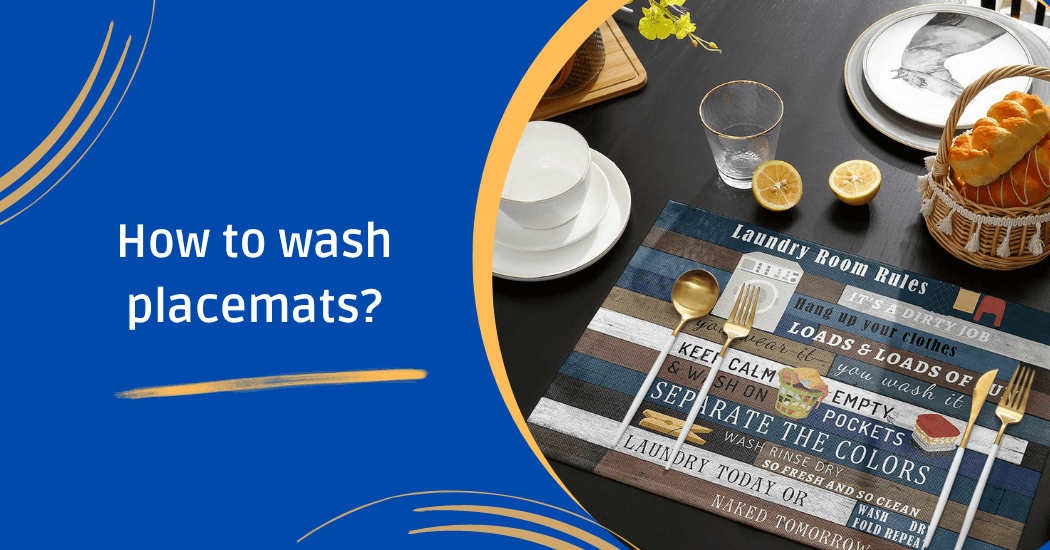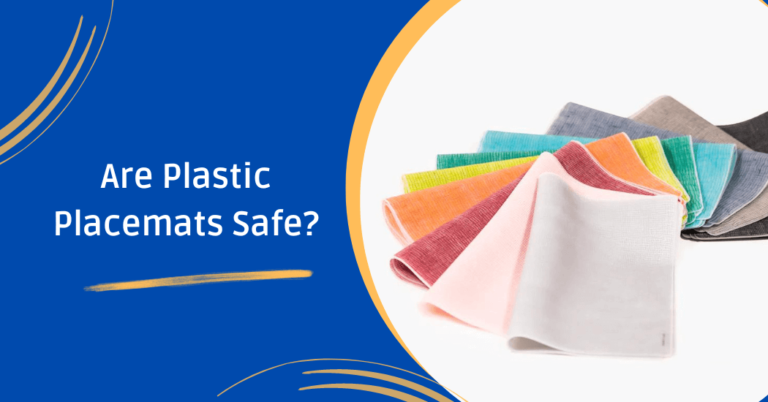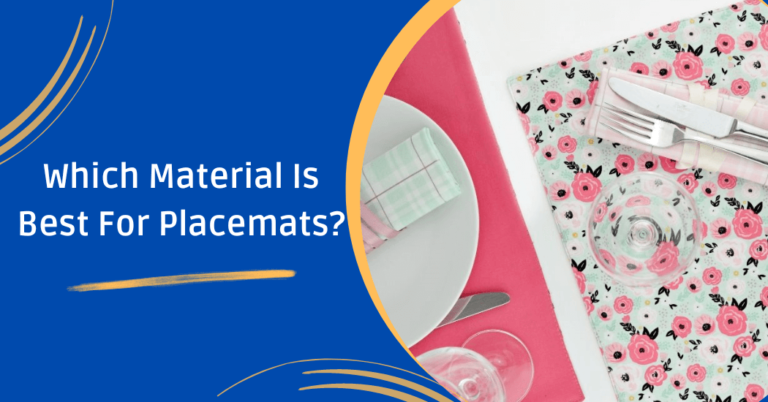Do you wash placemats?
The practice of using placemats has long been a common sight on dining tables around the world. These versatile table accessories not only add an aesthetic touch to meal settings but also serve a functional purpose in protecting table surfaces from spills and stains.
Yet, when it comes to the question of whether or not to wash placemats, opinions can vary.
In this discussion, we will explore the considerations and reasons behind washing or not washing placemats, shedding light on the practices and preferences that surround this everyday dining accessory.
We’ll also explore some best practices when it comes to cleaning placemats, ensuring your dining setup remains both aesthetically pleasing and hygienically safe.
Do you wash placemats?
In deciding to wash or not to wash placemats, it is important to consider several factors, such as the type of material used in manufacturing the placemats and how often they are used.
If the placemats you own are made of cloth or other fabric, it’s a good idea to consider how often they are used as well. If your placemats come into contact with food regularly, then it is highly recommended that you wash them regularly. This will ensure that any food particles or spills are removed, thus keeping your table safe from contamination.
On the other hand, if your placemats are rarely used and never come into contact with food, then it may not be necessary to wash them frequently. In this case, spot cleaning with a damp cloth may be sufficient for keeping them clean and hygienic.
How to wash different placemats?
Here are some general guidelines for washing different types of placemats:
- Cloth Placemats: Cloth placemats are usually machine washable. Check the care label for specific instructions regarding water temperature and detergent. Typically, you can wash them in cold or lukewarm water with a mild detergent. Avoid using bleach, as it can damage the fabric. After washing, hang or lay them flat to air dry or tumble dry on a low heat setting. Iron them if necessary.
- Vinyl or Plastic Placemats: Vinyl or plastic placemats are easy to clean. Simply wipe them with a damp cloth or sponge after each use. If they become heavily soiled, you can wash them with warm, soapy water and a soft cloth. Rinse thoroughly and allow them to air dry. Avoid using abrasive scrubbers or harsh chemicals, as they can scratch or damage the surface.
- Paper Placemats: Disposable paper placemats are not meant to be washed. They are designed for single use and should be discarded after a meal.
- Bamboo or Fabric-Backed Placemats: Bamboo placemats with fabric backing may require special care. Check the care instructions for the fabric part and follow those guidelines for washing. The bamboo part can be wiped clean with a damp cloth.
- Laminated Placemats: Laminated placemats are usually easy to clean. You can wipe them with a damp cloth or sponge. Avoid using abrasive materials or scouring pads, as they can scratch the surface.
- Cork Placemats: Clean cork placemats with a damp cloth or sponge. Avoid using chemical cleaners, as they can damage the cork. If necessary, you can use a mild cleaner and rinse thoroughly afterward. Allow them to air dry completely before placing them back on the table.
When washing all types of placemats, it is important to avoid soaking them in water. Make sure to read the care instructions on each placemat before washing, as some materials may be more delicate than others.
Pros and Cons of Washing Placemats
When deciding whether or not to wash placemats, it is important to consider the pros and cons that come with washing them. Here are some of the advantages and disadvantages of washing placemats:
Pros
- Hygiene: Washing placemats regularly ensures that food spills or particles are removed, preventing the risk of contamination.
- Stain Removal: Washing allows you to effectively remove stains from placemats, preserving their appearance and preventing unsightly marks or discoloration.
- Aesthetics: Regular washing also helps to keep your placemats looking clean and attractive.
- Durability: Washing can also help to maintain the condition and appearance of the materials used in manufacturing the placemat, thus increasing its durability over time.
Cons
- Time-consuming: Washing placemats can be quite time-consuming, especially if they need to be done regularly.
- Stain Removal: Washing allows you to effectively remove stains from placemats, preserving their appearance and preventing unsightly marks or discoloration.
- Shrinkage: If not cared for properly, placemats made from certain materials may shrink or become misshapen when washed, rendering them unusable.
- Color Fading: Over time, repeated washing can cause colors on placemats to fade, diminishing their aesthetic appeal.
By considering all of these factors, you can make an informed decision about whether or not to wash your placemats regularly.
Maintenance tips for placemats
In addition to regular cleaning, there are a few tips you should use to keep your placemats in top condition.
Here are some helpful maintenance tips:
- Avoid excessive heat when washing or drying placemats. This will prevent the fabric from shrinking or fading.
- When storing, fold each placemat in half and place it on top of the other placemats. This will help prevent creases and wrinkles.
- To remove food stains, use a gentle cleaning solution like dish soap or baking soda mixed with water. Test in an inconspicuous area first to make sure it won’t damage the material before applying it to the entire surface.
- Dust your placemats regularly using a vacuum cleaner with a brush attachment. This will help remove any dirt or dust that may have accumulated over time.
- To prevent fading, store placemats in a dark, cool place away from direct sunlight.
- For long-term storage, use acid-free tissue paper between the folded placemats to protect them from discoloration.
- Placemats are designed to protect your table from heat but avoid placing hot pots, pans or dishes directly on them to prevent damage. Use trivets or hot pads underneath hot items.
By following these simple maintenance tips, your placemats will stay looking as good as new for years to come.
Final Words
In conclusion, whether or not you should wash placemats depends on the type of placemat, its material and the degree of soiling it has undergone. Fabric and cloth placemats typically require regular washing to maintain cleanliness and hygiene.
On the other hand, plastic or vinyl placemats may only need occasional wiping or rinsing. Ultimately, it is essential to follow the manufacturer’s care instructions and consider the specific circumstances and frequency of use in your household when deciding whether to wash placemats.
Keeping your placemats clean not only enhances the dining experience but also contributes to a healthier and more appealing dining environment.








